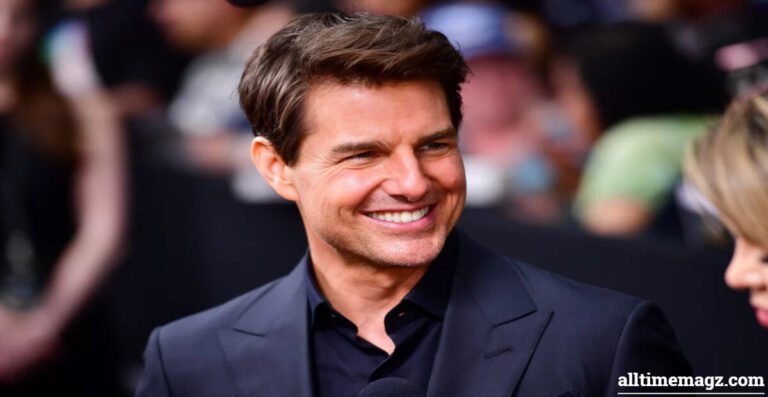Introduction to the concept of beauty and its subjective nature
Beauty is a concept that has fascinated humanity for centuries. Yet, its definition remains as elusive as the wind. What one person finds stunning, another may overlook entirely. This subjectivity makes beauty a rich topic for exploration. Today, we dive into the realm of physical appeal and inner charisma to discuss an intriguing title: the most handsome man in the world.
Who holds this coveted title? Is it mere looks or something deeper that qualifies someone for such recognition? As we navigate through features that captivate and qualities that inspire, we also confront societal standards shaping our perceptions of beauty. Are these norms restrictive or liberating? Join us on this journey where we’ll break down barriers related to gender and redefine what it means to be truly beautiful in today’s world.
The Most Handsome Man in the World: Who is he?
The title of “Most Handsome Man in the World” often sparks debate and admiration alike. Various names come to mind, but one figure consistently emerges at the forefront: Henry Cavill.
With chiseled features and striking blue eyes, he captures attention effortlessly. Yet it’s not just his looks that earn him this accolade; it’s also his charisma and charm on screen.
Cavill’s portrayal of Superman has solidified his status as a modern icon. His dedication to fitness adds to that rugged appeal, making him an embodiment of classic masculinity.
However, beauty is subjective. Many might argue for other stars like Tom Cruise, Brad Pitt or Idris Elba based on personal taste. Each contender brings their unique flair.
The most handsome man transcends mere appearances; he resonates with those who admire him for various reasons beyond just physical traits.
Physical features that make him stand out
When discussing the most handsome man in the world, his physical features often steal the spotlight. A chiseled jawline is a hallmark of classic beauty, adding structure to his face. High cheekbones create an alluring symmetry that captures attention.
His captivating eyes tell stories without words. Whether they are deep-set or spark with excitement, they draw people in and leave lasting impressions.
Hair can be another defining trait—thick locks or perfectly tousled waves contribute to an overall striking appearance. The way he carries style speaks volumes about confidence.
Then there’s that smile; it’s infectious and genuine, showcasing warmth and approachability. Each feature harmonizes beautifully, creating a unique blend of attractiveness that resonates widely.
Beyond physical appearance: exploring inner qualities and accomplishments
While physical attributes often dominate discussions about beauty, inner qualities play an equally vital role. Charisma, kindness, and intelligence can elevate someone’s appeal far beyond surface-level aesthetics.
Consider the most handsome man in the world—not just for his looks but also for his character. Confidence shines when someone is passionate about their pursuits or dedicated to helping others. These traits resonate deeply with people.
Accomplishments further enrich one’s attractiveness. Whether it’s artistic talent, athletic prowess, or humanitarian efforts, achievements tell a story of resilience and determination.
When we appreciate both appearance and inner virtues together, we cultivate a fuller understanding of what makes someone truly captivating. This deeper appreciation allows us to celebrate individuals who inspire change and embody integrity alongside good looks.
The impact of societal standards on our perception of beauty
Societal standards play a significant role in shaping our perception of beauty. These ideals are often influenced by culture, media representations, and historical context. They create a framework that many feel pressured to conform to.
From magazine covers to social media feeds, we are bombarded with images presenting narrow definitions of attractiveness. This can warp our understanding of what is truly beautiful.
Many individuals may find themselves striving for an unattainable look, leading to insecurity and dissatisfaction. The constant comparison fueled by these standards affects self-esteem and mental health.
However, it’s essential to recognize that beauty is not monolithic. Different cultures celebrate diverse features and qualities that challenge mainstream ideals. As society evolves, so too does the conversation around beauty—encouraging more inclusive perspectives that embrace individuality rather than conformity.
Beauty beyond gender: breaking barriers and redefining standards
Beauty is evolving, transcending traditional gender norms. Today, individuals express their uniqueness beyond the binary classifications of male and female.
Icons like Harry Styles and Billy Porter challenge outdated standards with their bold fashion choices. They embrace beauty in all forms, showing that it’s not confined to societal expectations.
Social media platforms amplify diverse representations of beauty. This visibility allows people from various backgrounds to celebrate their own identities unapologetically.
As we witness this shift, definitions of handsomeness also expand. Traits once deemed exclusively masculine are now appreciated in everyone.
This movement fosters inclusivity and encourages self-acceptance. It redefines what it means to be beautiful or handsome by prioritizing authenticity over convention.
People are encouraged to explore new expressions without fear of judgment or ridicule. As barriers fall away, the concept of beauty becomes a vibrant tapestry woven from countless individual stories and experiences.
Conclusion: beauty is more than just a face, it’s a reflection of character and individuality
Beauty has long been a topic of fascination and debate. It goes far beyond mere physical attributes. The most handsome man in the world may possess striking features, but true beauty is multi-faceted.
Character plays a pivotal role in defining attractiveness. Kindness, intelligence, and charisma can enhance one’s appeal immensely. Accomplishments also contribute to an individual’s overall allure; those who work hard and achieve great things tend to inspire admiration.
Societal standards have continuously shifted over time, reminding us that what we perceive as beautiful can vary widely across cultures and eras. Breaking down these barriers allows for a richer understanding of beauty that embraces diversity rather than confining it to narrow definitions.

